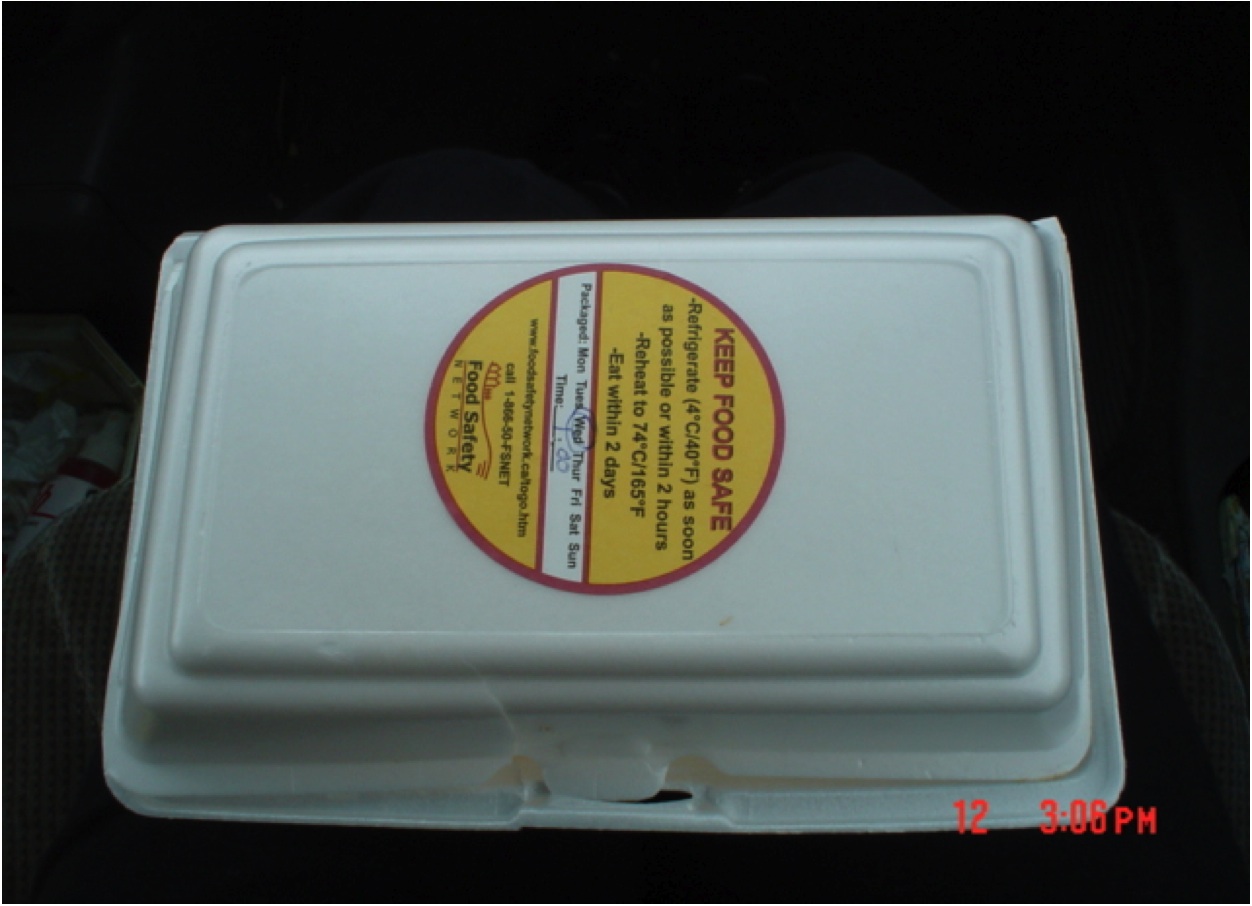Food such as takeout or takeaway, that is initially prepared in a restaurant but is consumed in an individual’s home, may be a venue to target with safe-food handling messages. Earlier this decade, both Chicago-based Francesca Restaurants and Boston-based Buca Di Beppo Restaurants reported anecdotal success placing food safety labels on containers of takeout food.
 In 2004, my group undertook research to:
In 2004, my group undertook research to:
• examine restaurant managements’ experience of using a safe food-handling label on takeout food;
• explore managements’ food safety concerns;
• determine the value of consumer safe-food handling labels to managers;
• establish perceived label effectiveness; and,
• identify challenges with implementation.
For our study, we defined take-out as food procured from a casual dining restaurant (i.e. sit-down restaurant) but eaten elsewhere, including food ordered as take-out and leftover food packaged to be taken home. The label we developed is right (above) and left (note, the phone line and web site don’t work anymore).
The research paper describing that work has been accepted by a peer-reviewed scientific journal and will be published in the near future.
However, the public health types in Dubai discovered over the weekend the same thing we found: most consumers and restaurateurs like the idea.
 Our bites.ksu.edu Dubai correspondent contacted Ben and me about stickers on takeaway, and we sent along what we had developed. Today, the Khaleej Times reports,
Our bites.ksu.edu Dubai correspondent contacted Ben and me about stickers on takeaway, and we sent along what we had developed. Today, the Khaleej Times reports,
The Dubai Municipality is planning to encourage all restaurants in the emirate to issue advisories to consumers on safe handling of takeaway food.
The decision follows a similar initiative by a popular south Indian restaurant group that attaches red stickers to its takeaway bags at its two outlets in Dubai. A municipality official applauded the group’s move and said the civic body intended to support such initiatives by other restaurants as well.
Director of Food Control Department, Khalid Mohammed Sherif, told the Khaleej Times,
“We are encouraging more and more food outlets to put such messages along with takeaway food to ensure that the customer handles the food properly. We will be providing all of them with modified instructions for customers to handle food taken away.”
He said the modified versions of the advisories will include the temperature at which food items have to be stored and the duration within which they have to be consumed, depending on the types of ingredients.
Below is a draft of the information intended for consumers.

 A takeout restaurant in Scarborough was fined $20,000 – the maximum penalty – after pleading guilty to four food-safety violations, including a "heavy" cockroach infestation.
A takeout restaurant in Scarborough was fined $20,000 – the maximum penalty – after pleading guilty to four food-safety violations, including a "heavy" cockroach infestation.
(1).jpg) Which was exactly one of our thoughts when we began experimenting with food safety stickers about five years ago.
Which was exactly one of our thoughts when we began experimenting with food safety stickers about five years ago.(1).jpg)
.jpg) They were diagnosed with food poisoning tracked back to the "doggie bags" taken and eaten at home. Amil Aga, epidemiological supervisor at the hospital, reached the conclusion that the leftovers had been left outside rather than in refrigeration for several hours until the extended family got home.
They were diagnosed with food poisoning tracked back to the "doggie bags" taken and eaten at home. Amil Aga, epidemiological supervisor at the hospital, reached the conclusion that the leftovers had been left outside rather than in refrigeration for several hours until the extended family got home. In 2004, my group undertook research to:
In 2004, my group undertook research to: Our
Our 